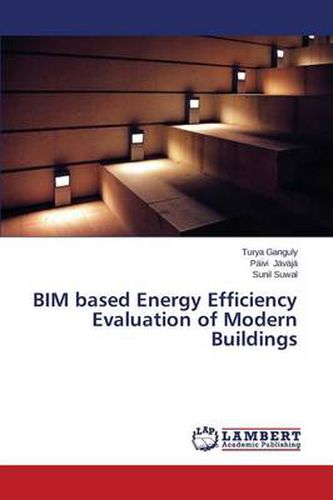Readings Newsletter
Become a Readings Member to make your shopping experience even easier.
Sign in or sign up for free!
You’re not far away from qualifying for FREE standard shipping within Australia
You’ve qualified for FREE standard shipping within Australia
The cart is loading…






This title is printed to order. This book may have been self-published. If so, we cannot guarantee the quality of the content. In the main most books will have gone through the editing process however some may not. We therefore suggest that you be aware of this before ordering this book. If in doubt check either the author or publisher’s details as we are unable to accept any returns unless they are faulty. Please contact us if you have any questions.
Building information modelling (BIM) processes, technologies, and applications are rapidly re-engineering the work methodology in the AEC & FM industry. BIM provides a more interactive and integrated approach to design, construction and operation of facilities and aims to provide high end benefits for all. Energy efficient buildings with minimal or positive environmental impacts are considered important in countries worldwide and energy efficiency evaluation is one of the major fields that BIM supports today. The book describes the present scenario with the help of the two case studies and a comparative analysis of the major Energy Performance Evaluation tools. Important aspects such as transition of BIM to BEM and its contents such as building energy management, building performance indicators etc have been discussed. Some light has also been shed on the present building regulation in Germany, since the site location of both the buildings included in the studies is Berlin, Germany. The paper provides a comprehensive insight and points out various aspects that can be used for improvement of the tools, for better energy management and to achieve highly energy efficient buildings.
$9.00 standard shipping within Australia
FREE standard shipping within Australia for orders over $100.00
Express & International shipping calculated at checkout
This title is printed to order. This book may have been self-published. If so, we cannot guarantee the quality of the content. In the main most books will have gone through the editing process however some may not. We therefore suggest that you be aware of this before ordering this book. If in doubt check either the author or publisher’s details as we are unable to accept any returns unless they are faulty. Please contact us if you have any questions.
Building information modelling (BIM) processes, technologies, and applications are rapidly re-engineering the work methodology in the AEC & FM industry. BIM provides a more interactive and integrated approach to design, construction and operation of facilities and aims to provide high end benefits for all. Energy efficient buildings with minimal or positive environmental impacts are considered important in countries worldwide and energy efficiency evaluation is one of the major fields that BIM supports today. The book describes the present scenario with the help of the two case studies and a comparative analysis of the major Energy Performance Evaluation tools. Important aspects such as transition of BIM to BEM and its contents such as building energy management, building performance indicators etc have been discussed. Some light has also been shed on the present building regulation in Germany, since the site location of both the buildings included in the studies is Berlin, Germany. The paper provides a comprehensive insight and points out various aspects that can be used for improvement of the tools, for better energy management and to achieve highly energy efficient buildings.